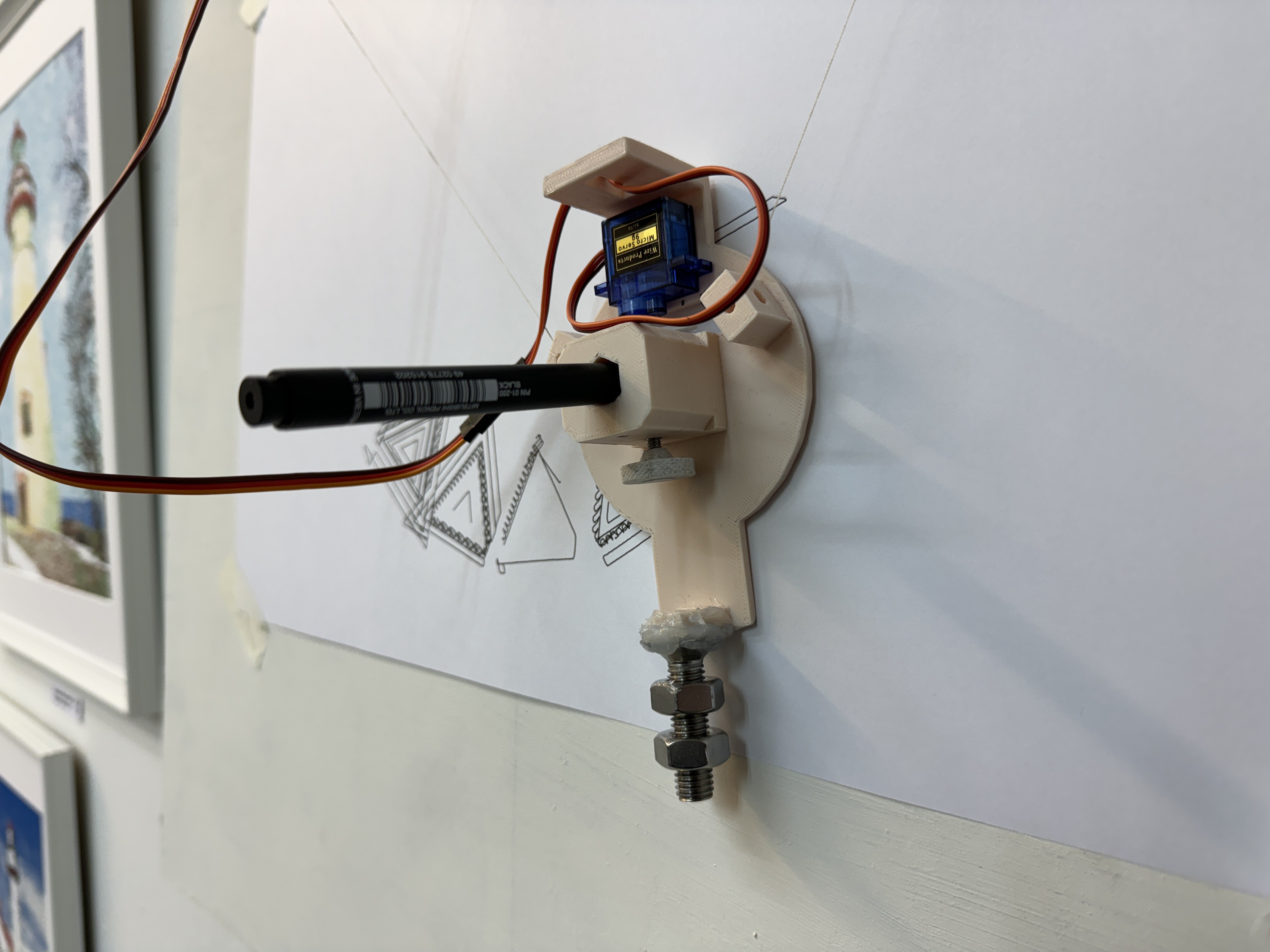We are part of Wimbledon Art Fair this weekend, and the plotter (which I have named "Picoplot" for the sake of having a title!) is hanging just inside the studio door, as a nice way to draw folks in. Blinky lights and moving robots!

I've painted the MDF back board as the original greenish colour was a bit jarring on the wall, and I also "upgraded" the cotton lines for the gondola to an extra strong thread (and also made them a bit longer). We put a fishing line across underneath the plotter to hang pieces from - although several of the plots in the picture below are from the AxiDraw on the table across the studio.

I thought I'd write down some real-world lessons learned.
- I marked the thread where it goes onto the pulleys with a Sharpie so that I could easily get the pen back to the centre of the board... it was a good plan in principle, but the ink bled along the thread so it is not as accurate as I wanted.
- as an aside, multicolour / layer plots are a bit challenging when the pen is off-centre.
- The plotter is hanging above our radiator (the existence of which, to be honest, was a large factor in our choice of studio!)... this means that the pen tips have dried up on a couple of occasions and I've had to start over.
- There have been some issues where the wires for the gondola have become tangled around the pen or otherwise become too taut, so the gondola has ended up at an angle with the pen unable to touch the paper.
- The practical limits of where the pen can travel are becoming more apparent. To try to keep the pen more level, I added an additional nut to the hanging bolt (a handy thing that Ben had in his design I've forked from, the fact that I can just screw on another nut to add ballast is super useful!)

Finally, the reliability has proven a bit hit-and-miss. I'm not certain of the cause - I think loose wire connections are part of it (I'll likely switch to soldered connections in place of the Dupont connections after the show), but I also noticed some static discharges happened when I came near the radiator a couple of times. I don't particularly want to hide the circuit inside a sealed box as this is currently a nice talking point, but if that is the issue then I might work more on the 3D printed elements to make it prettier (and hopefully, less susceptible to external static discharge).
 Andy Piper
Andy Piper
Discussions
Become a Hackaday.io Member
Create an account to leave a comment. Already have an account? Log In.